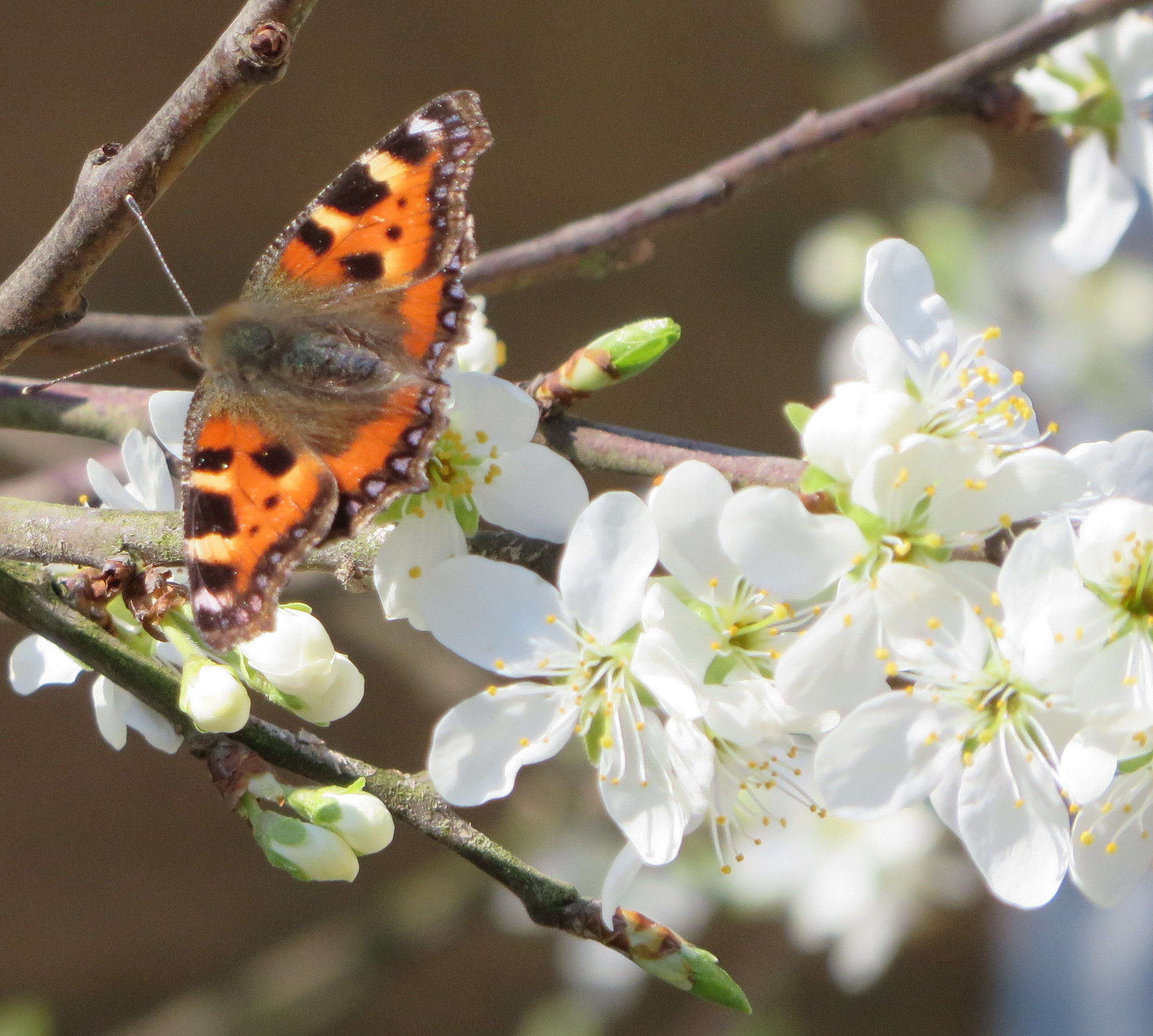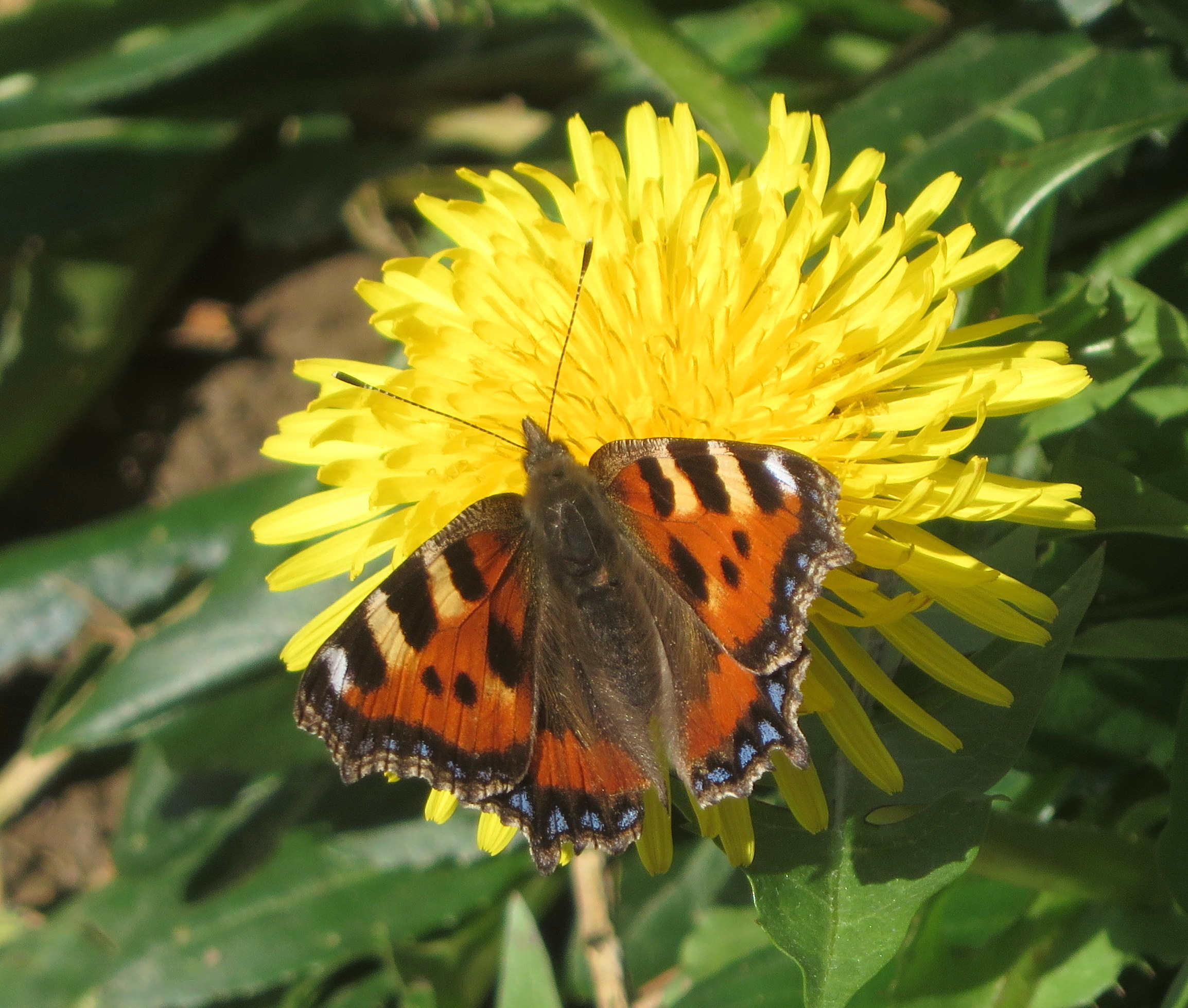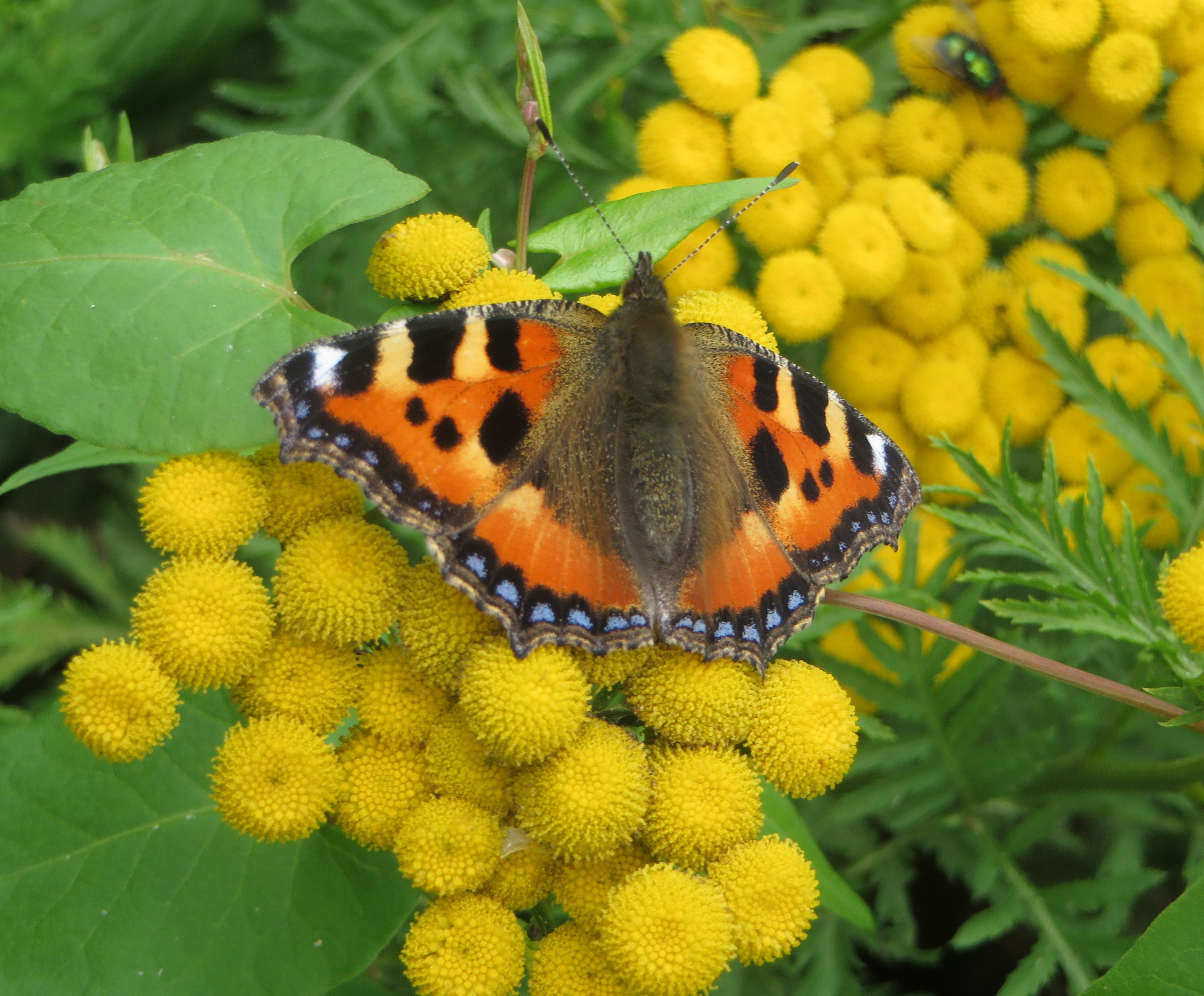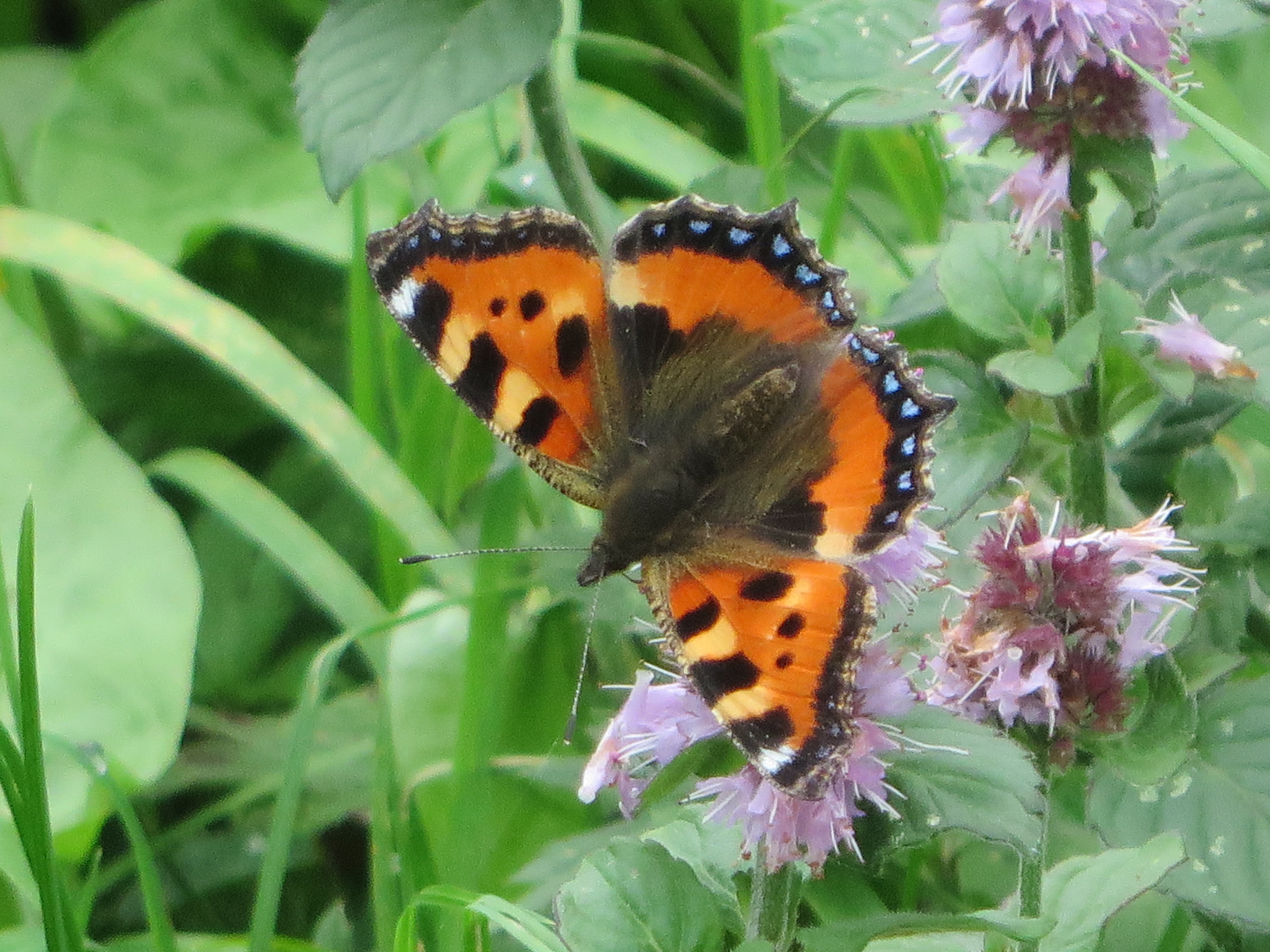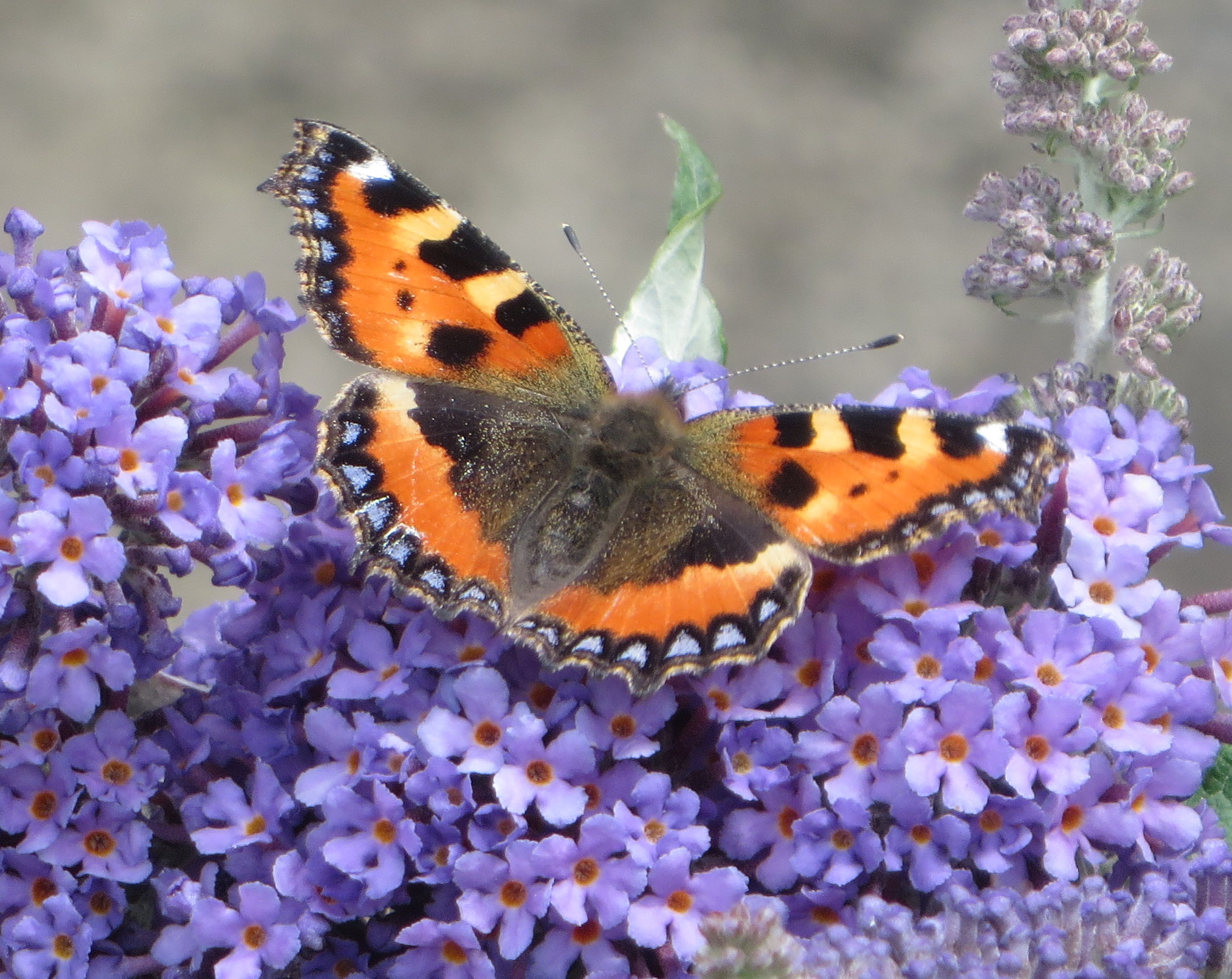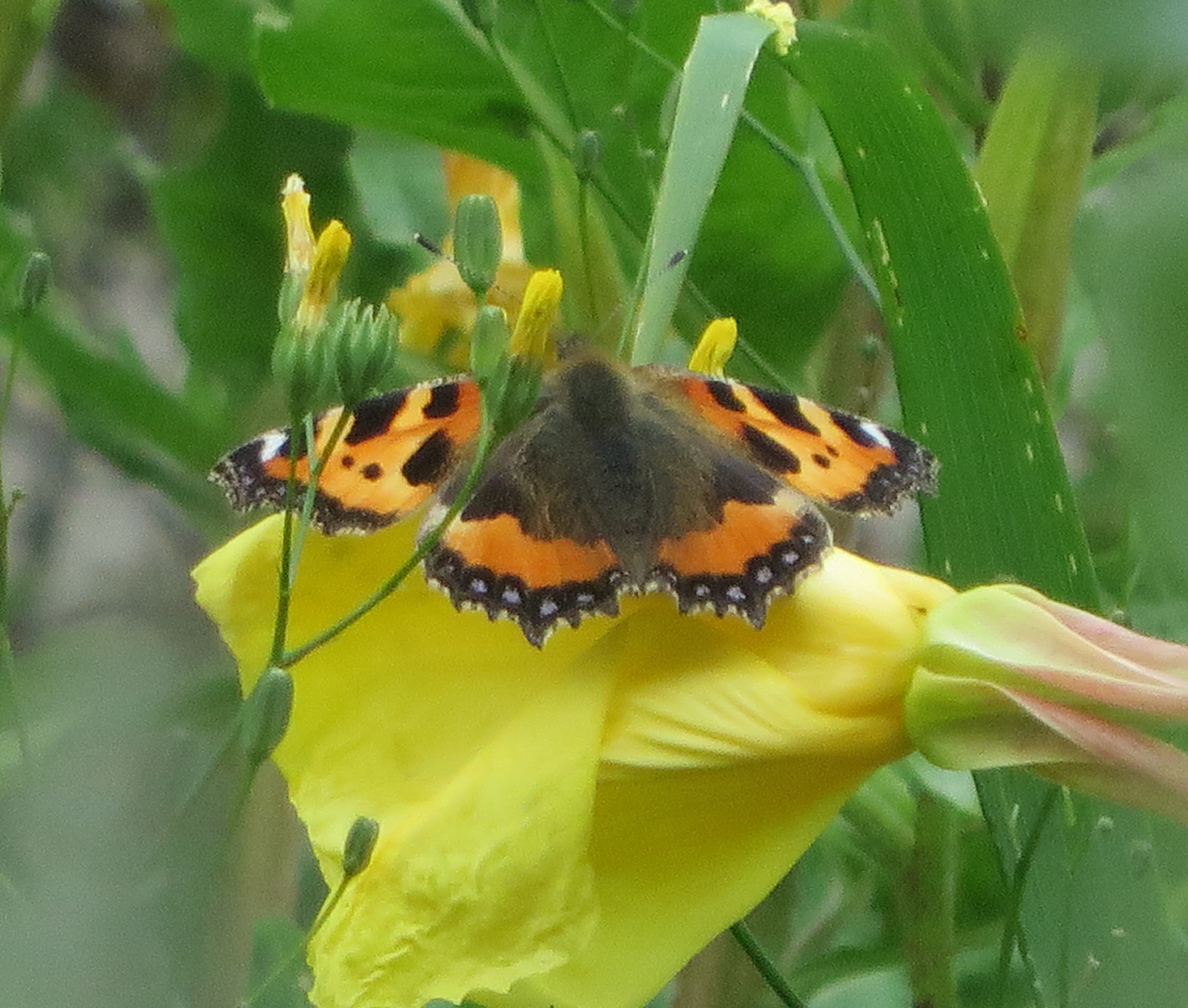In today’s post Butterfly Conservation Ireland brings you an article by Pat Bell. Pat, based in Maynooth, gardens for nature generally and especially for butterflies. His close observation has meant that Pat has accumulated a great store of data which has allowed him to increase our knowledge of butterflies. Strangely, it is frequently common species that are often least-studied but the Small Tortoiseshell has not been neglected by scientists. It is a remarkable butterfly and has been proven to have a landscape memory. Here Pat delves into the butterfly’s generation structure, its activity requirements and into the adult’s taste in nectar.
In addition to carrying out Butterfly Conservation Ireland’s garden survey, I also count the butterflies in my garden on a weekly basis. I use a methodology similar to Birdwatch Ireland’s Garden Bird Survey in that I record the highest number of butterflies observed at any one time for each species every week. I then put these numbers into an Excel spreadsheet which enables me to generate useful tables, charts and graphs.
Almost 40% of my total abundance is Small Tortoiseshell so this is the species I have chosen to do some statistical analysis on. My first graph is a plot of the weekly counts over the Irish Butterfly Monitoring Scheme period which is conducted by the National Biodiversity Data Centre and runs from 1st April to 30th September. The graph shows clearly the two-generation structure characteristic of this butterfly. The first peak in week 17 is late July and while some go directly to hibernation most of this short-lived generation go on to produce the larger second brood that emerges from mid-August. The second peak in week 23 is early September and the main activity of these butterflies is to feed up for the long hibernation ahead.
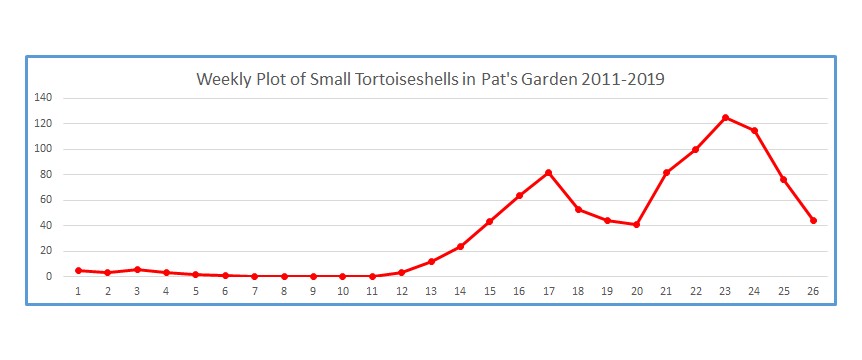
For some time I have been increasing my efforts to make my existing wildlife garden more butterfly friendly especially by focussing on nectar-rich flowers and larval food plants. My grass area (not a lawn) with wildflowers continues to evolve, I have a perennial herbaceous bed, an annual bed which I experiment with and a couple of nettle patches. I also have a small native hedgerow (yes, in a suburban garden) and about a dozen different fruit trees. A summer-flowering buddleia was planted in May 2010 and an autumn-blooming buddleia in 2011. This latter produced its greatest blossom in 2012 when I observed my record numbers of Small Tortoiseshells, maxing at 50 in week 24 around the middle of September. I never reached these numbers again and I had more or less put it down to the fact that it is difficult to keep buddleia blossom going strongly into September even the autumn flowering one.
At this point perhaps I should mention that I have a grid-connected photovoltaic solar system. This also churns out lots of data which go into another spreadsheet; I like my spreadsheets. This allows me to correlate sunshine levels and butterfly abundance. Just as our weather is very variable so are our butterfly numbers. In some years my Small Tortoiseshell numbers hold up well to the end of September, while in other years they can fall away quite suddenly and then there are just poor years. My numbers last September 2019 were average enough and tailed off gradually over the month. When the butterfly season is over I get to play around with the numbers.
I thought I detected something interesting which I put to the test, Pearson’s correlation coefficient R to be specific. This is easy enough to do in Excel and I was pleasantly surprised to get the result I did of R=0.87 which is quite a strong correlation. The trendline graph below generated by Excel shows clearly the close relationship between the output from my solar system and numbers of Small Tortoiseshells in September, the high point on the right of the graph is from the aforementioned 2012. R²=0.76 is the variance and can be interpreted as 76% of the variation in Small Tortoiseshell numbers can be explained by sunshine levels in my garden.
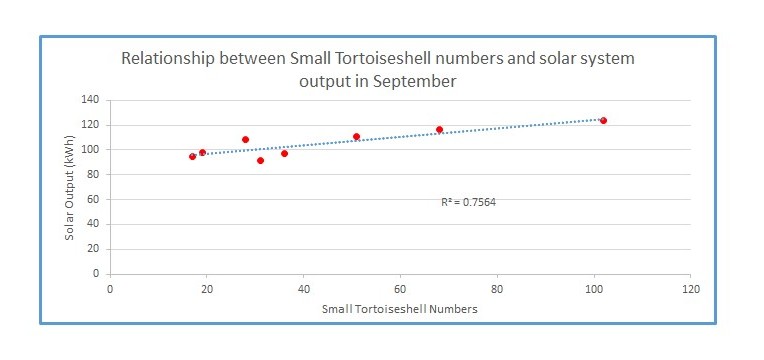
As a further test I then correlated my Small Tortoiseshell numbers against hours of sunshine in September from Met Éireann’s weather station at Casement Aerodrome which gave virtually a zero correlation. I have interpreted this to mean that Small Tortoiseshells react to the micro sunshine conditions in my garden. While this may not be entirely surprising there are other factors which can influence butterfly numbers such as food availability, cyclical variability and natural predation and parasitism and I did think originally that their numbers were just linked to the availability of buddleia blossom. Small Tortoiseshells often travel up to several kilometres each day so perhaps they are lured to my garden by the scent of the buddleia when flying conditions are favourable.
I won’t be doing a PhD on this but it keeps me amused and I hope it is of some interest to readers in these difficult times.
Pat Bell, March 2020
The following photographs, all © Pat Bell, indicate one reason why the Small Tortoiseshell is so successful; it is able to exploit a range of nectar sources. Not all species can do this; the Hedge Brown is limited to flowers with a shallow flower tube to access the nectar.

